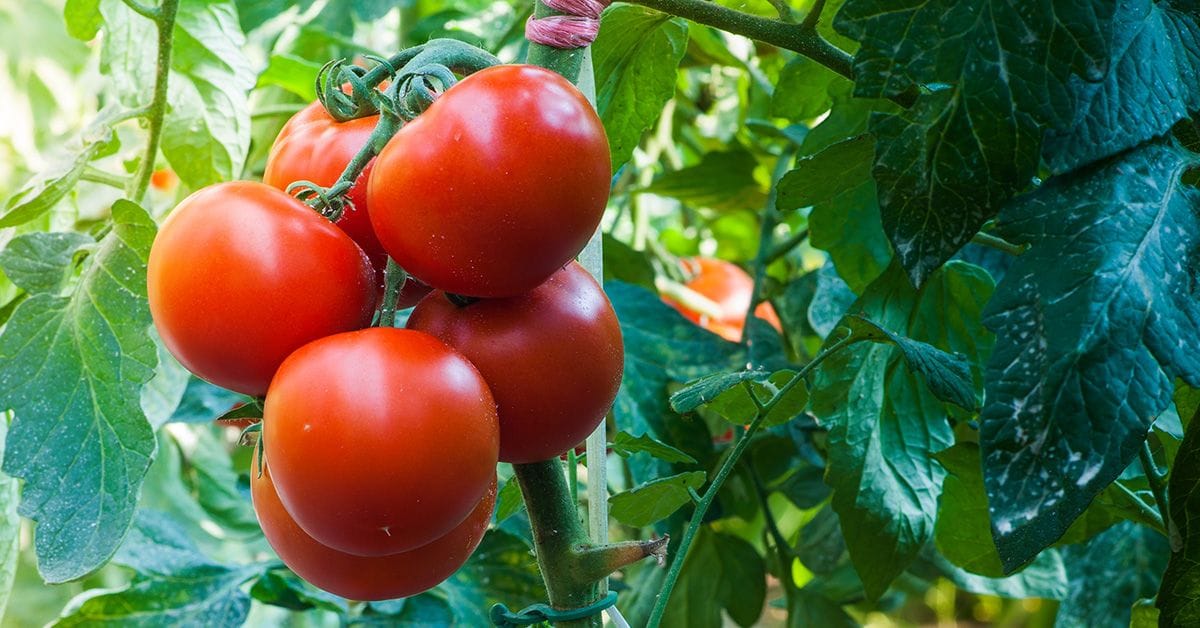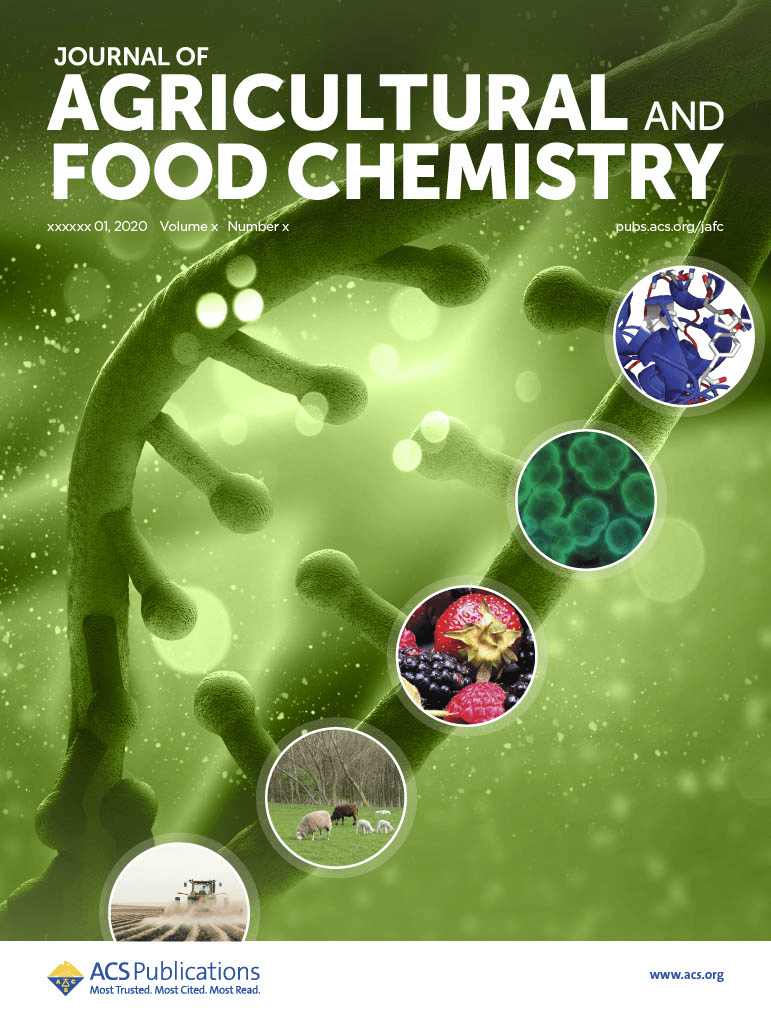Tomatoes are a staple of the vegetable garden, but many crops have been negatively impacted due to climate change. New work is looking into how different water spray stimuli may help strengthen tomato plant growth and pest defenses.

Tomatoes are a favorite for many gardeners around the world: they are relatively easy to grow from seed, there are seemingly endless varieties to choose from, and a bountiful yield can adorn many a summer salad or be cooked and stored for winter sauces. But many regions have struggled in recent years with changing weather and climate patterns, and today's home growers are often having to adapt or modify traditional gardening methods passed down from earlier generations.
Even so, plants can be incredibly resilient and respond in fascinating ways to their external environment. One aspect many of us may overlook is the power of mechanical stimuli: when we brush through the leaves to release that rich tomato scent or lightly examine the fruits for ripeness, the plant "knows" we're there. One of the key mechanical stimuli for tomatoes is water impact, either from rain or our irrigation practices. Recent studies have demonstrated that the impact of raindrops can directly activate plant immune response against pathogens, including jasmonic acid.1 This key phytohormone plays a pivotal role in regulating defense mechanisms in plants that protect against pathogens and herbivores.2
In new work published in the Journal of Agricultural and Food Chemistry, a team looked specifically at the effects of a specific water spray, termed "suprathreshold" due to its larger droplet size, on tomato plant growth and defense against cotton bollworm moth larvae and a necrotrophic fungus called Botrytis cinerea—the culprit for gray mold.6 The researchers exposed tomato plants to twice-daily watering from a sprinkler directly above, with each treatment lasting 3 seconds. Over a period of two weeks, they tested various water droplet sizes—high atomization (droplet size 200−300 μm) and low atomization (1000−1200 μm)—against unsprayed control plants.

Suprathreshold Water Spray Stimulus Enhances Plant Defenses against Biotic Stresses in Tomato
DOI: 10.1021/acs.jafc.4c05131
Results showed that the larger droplets enhanced plant defense against both pests and pathogens: the team observed an increase in jasmonic acid levels upon receiving this targeted water spray, leading to increased production of chlorogenic acid—a compound known for its protective properties—and a decrease in the plants' release of volatile organic compounds. Leaves sprayed with the larger droplets were less likely to be consumed by larvae, and the suprathreshold water spray even appeared to deter new eggs being laid, with a 74% decrease compared to the control plants. Additionally, the spray altered the physical shape of the tomato plants, making them shorter and more compact. This structure could have practical benefits, as it allows plants to grow with more efficient light capture and can reduce labor costs associated with crop management.
Importantly, neither watering system affected key attributes such as yield, size, firmness, or vitamin C content. Some elements of this seem to go against conventional wisdom that says not to wet the leaves when watering as it increases the risk of mold and blight. But given that plants have evolved to cope with being rained on, it makes perfect sense that there are inherent protections against a downpour. And with continued advancements in spray technology, this new method could provide a sustainable, efficient solution for managing crops in increasingly unpredictable climates.
Improving Tomato Plant Health: Further Explorations
Speaking of new tricks we can learn in the garden to help our tomato crops grow and flourish, let's take a look at how earthworms may be able to help. A recent study in Environmental Science & Technology shows that earthworms may offer a unique boost to tomato plant defenses—especially in soils affected by microplastic pollution—ultimately benefitting growth and again disrupting the feeding patterns of bollworm larvae. In addition to physical defenses, tests revealed that the earthworms activated higher levels of both jasmonic and chlorogenic acid, reducing oxidative damage and promoting healthier growth even under microplastic stress. The findings suggest that integrating earthworms into contaminated soil could be a sustainable approach to improve plant resilience, reduce reliance on synthetic pesticides, and support soil health.
In addition to mold and caterpillars, tomatoes can be susceptible to root-knot nematodes. But there are some resistant lines, and a 2023 study identified vanillin as a unique compound in the root exudates of resistant plants that acts as a lethal trap and inhibitor of egg hatching.8 But it didn’t need to be native: applying vanillin to the soil significantly reduced galls and egg masses. This organic, phenolic aldehyde can be produced from natural sources, and it could represent a novel and eco-friendly control strategy for combating nematodes. Other natural options include rose essential oil, which is rich in β-citronellol—crucial for activating defense genes in tomato leaves.9 When applied to the soil around tomato plants, damage caused by caterpillars was significantly reduced, and as a bonus, the oil summoned Phytoseiulus persimilis, a natural predator of spider mites.
Moving away from watering and pests, agricultural waste, wood, and sewage sludge are often used as feedstock materials for biochar—a potential alternative to chemical fertilizers. Different concentrations have been explored on tomato growth, metabolites, and antioxidant enzyme levels.10 Results demonstrated enhanced tomato seed germination and plant growth, with increases in both shoots and roots and weight compared to controls. Biochar supplementation also boosted chlorophyll, growth metabolites, and antioxidant enzyme activities, contributing further to robust plant development. Resorcinol, a phenolic compound used in a range of applications, also delivered enhanced protein, phenol, proline, sugars, and flavonoids.
These articles are just a few examples of novel ways in which we can help our tomato plants adapt and grow better without relying on chemicals. But on a larger scale, the findings have potential use in agriculture, helping growers make more informed and sustainable decisions regarding irrigation, fertilizers, soil stewardship, and pest management.
Chemistry is at the heart of innovation and application in the agriculture and food industries, and researchers worldwide trust ACS to provide cutting-edge information at the forefront of agricultural and food technology. Learn more about how you can stay informed of the latest developments in agriculture, food, and the environment.
